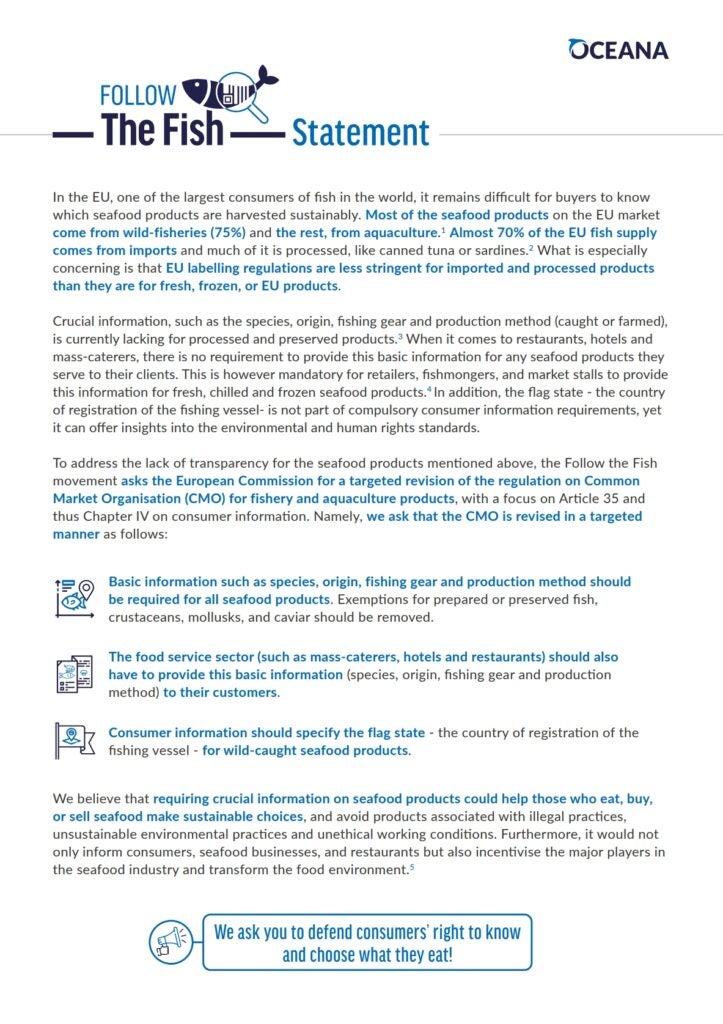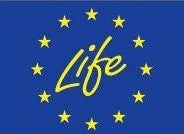Report | June 17, 2025
Follow the fish statement
In the EU, one of the largest consumers of fish in the world, it remains difficult for buyers to know which seafood products are harvested sustainably. Most of the seafood products on the EU market come from wild-fisheries (75%) and the rest, from aquaculture. 1 Almost 70% of the EU fish supply comes from imports and much of it is processed, like canned tuna or sardines.2 What is especially concerning is that EU labelling regulations are less stringent for imported and processed products than they are for fresh, frozen, or EU products. Crucial information, such as the species, origin, fishing gear and production method (caught or farmed), is currently lacking for processed and preserved products.3 When it comes to restaurants, hotels and mass-caterers, there is no requirement to provide this basic information for any seafood products they serve to their clients. This is however mandatory for retailers, fishmongers, and market stalls to provide this information for fresh, chilled and frozen seafood products.4 In addition, the flag state – the country of registration of the fishing vessel- is not part of compulsory consumer information requirements, yet it can offer insights into the environmental and human rights standards.


